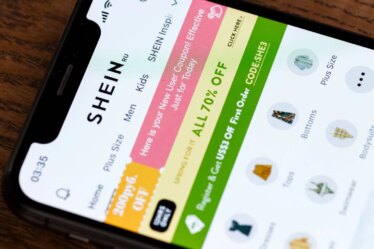
Formed in 2023 at the merger of five distinct agencies, each with their own competencies, acceleration company Front Row works with brands to bolster e-commerce growth and meet customers in the correct channels. Among its clients are Ouai, Summer Fridays, Farmacy Beauty, Bubble Skincare and more.
Central to Front Row’s offering is its marketplace account strategy, where the team builds a tailored approach for brand operations on key platforms such as Amazon and Walmart. It considers industry trends, competitor analysis and evolving customer preferences to maximise brand visibility, engagement, sales and retention on leading platforms, while also supporting operational intricacies such as optimised product listings and staying ahead of algorithm changes.
It’s a timely offering, with marketplaces continuing to cement themselves as a preferred shopping channel among consumers. Indeed, more than 35 percent of all online purchases are made on a marketplace, which could reach 60 percent by 2027, according to research by consultancy and technology business Wunderman Thompson.
Further to this, shopping holidays and events, or “Deal Days,” continue to anchor shopping behaviour at key moments throughout the calendar year, creating days of elevated purchase intent. This year, US shoppers spent more than $14 billion online during Amazon’s 48-hour Prime Day sale in July — up 11 percent from a year ago, according to Adobe Inc.
As brands combat sluggish sales amid broader economic uncertainty, leveraging these days can provide a crucial spike in sales and build brand visibility, but reservations around deep discounting and brand image remain.
Now, BoF sits down with Front Row’s VP of brand strategy Alexandra Carmody to discuss the components of a well-executed Deals Day strategy, how to maximise short-term benefits and the key marketplace trends to inform a brand’s approach.
How are customer and brand attitudes to Deal Days evolving?
Convincing brands to participate in retailer-specific promotional holidays has been a long journey. Over the last couple of years, brands have perhaps been burned by offline department stores and their “always on sale” approach.
For brands, awareness of customer appetites is key. For instance, we know the idea of “exclusive to Amazon” deals appeal to shoppers because they look to do big, cross-brand checkouts. It has taken brands a really long time to get on board with this idea because of sensitivity with long-standing brick-and-mortar partners. Those partners tend to want two extremes from brands — either their full range or just a hero product. Amazon is very different from this.
Today, whether it’s Prime Day, Black Friday or Cyber Monday, offering discounts isn’t enough. Brands have to create something unique within that channel to attract shoppers to that particular platform or offer them something they didn’t realise they needed.
How should brands prepare in advance for Deal Days to maximise long-term benefits?
In most cases, once Black Friday and Cyber Monday end, we begin the planning for next year. We find that you have to demand-plan for the year ahead’s Q4 at the start of Q1, taking into account constraints such as port strikes and access to raw materials to create the product in the first place. Brands need a strong stance on what they can potentially offer, from holiday exclusives to the impact on the bottom line.
If you are focused on the impact of Amazon, then that exclusive component is really key — it is how you will maximise the benefits of those events. For instance, planning for exclusive kits that are specific for Prime Day.
These kinds of kits and products can offer brands a lot of valuable customer data. Post-purchase, what are they coming back to buy more of? Are they going to become a long-term “subscribe and save” customer? How can you nurture customer loyalty? Brands could launch a million deals throughout the year and if they are not nurturing new customers then they won’t realise those long-term benefits. Amazon itself is doing a big push to try and get brands to think about this approach and, in turn, they will offer marketing support.
For example, during Prime Day 2024, Ouai leveraged a 20 percent discount on its full assortment and implemented a comprehensive strategy that focused on customer acquisition and organic ranking improvement, including extensive on-platform advertising, inventory planning, and optimising product listings for SEO. It also emphasised its biggest customer acquisition SKUs and hero products, which allowed it to maximise engagement during the event.
They took advantage of Amazon’s promotional tools, running their discount as a “Top Deal” to increase visibility among shoppers. This strategy led to a 100 percent year-on-year increase in total sales, with a traffic lift of 300 percent during the event. It then saw sustained double-digit growth in total sales in the months following Prime Day.
How do organic search rankings on Amazon relate to Deals Days performance?
The algorithms that underpin e-commerce sites like Amazon or Walmart mean that organic rankings have to be nurtured in the lead-up to big shopping events and activations. If brands are not doing their due diligence from an SEO perspective, or not tracking their rankings on the keywords or search terms they want to win on ahead of time, then sustaining and measuring impact becomes challenging.
Brands could launch a million deals throughout the year and if they are not nurturing new customers then they won’t realise those long-term benefits.
I think what brands need to start doing more is asking, what can I learn in terms of how my rankings improved? Which keywords do I need to put in my title? How do I reflect that in my copy? How do I serve on those terms and actually allocate budget from the paid side to try and maintain some of those commercial gains?
For example, one of our partners is in the supplements industry. Their high sales volume has earned them a number nine ranking for probiotics on Amazon. However, we have to ask, is that a true sales spike? Or are we driving traffic off-channel, which is also helping that organic ranking outside of branded terms?
How can brands leverage Deals Day visibility and traffic to drive growth in other channels?
I think brands will naturally see a small halo effect surrounding Deals Days. Amazon, for example, always holds their major shopping events within a certain time frame. Now, Walmart, Target and even retailers like Costco will map their events accordingly, taking place just before, during and immediately after Amazon’s events, which creates this feeling of a bigger shopping occasion. Brands are even using their own Prime Day-inspired code on socials to stimulate direct-to-consumer (DTC) sales.
However, the value comes from offering different things across your channels to suit the corresponding demographics. There is something to be said for offering exclusive benefits to DTC shoppers. Whether that’s a gift with purchase or an additional percentage off, this can be a smart way for brands to build an omnichannel yet differentiated strategy. To do this, brands have to figure out a balance of offering something distinct enough to Prime Day so that there’s no cannibalisation of sales.
What emerging marketplace trends should brands consider for sustained Deals Day success?
Brands need a strong affiliate marketing plan to help lift for Prime Day or any of the big Deal Days. It’s one thing to have a solid influencer network and get your product to people to talk about on TikTok, but the cut-through comes through shoppable links, lists and round-ups of Amazon deals. These are the best investment brands can make if they want to boost visibility of their ‘Deal Day’ involvement.
Success looks something like having a longer strategic plan to engage those new-to-brand shoppers further down the funnel.
Affiliate partners can also help brands understand the Prime Day shopper journey — perhaps they are looking at CNN’s articles before they even go to the platform in search of anything. So, it’s not as simple as when a brand could previously put up a story on Instagram with a swipe-up to Amazon, and I think the affiliate pushes are where brands are a little behind the curve and realising they really do need that visibility.
What metrics measure campaign success beyond immediate sales figures?
Outside of sales, I think success is bringing in new-to-brand customers and not just selling to people who already know your brand and are stocking up because it’s a promotion and seeking out that discounted price. Success looks something like having a longer strategic plan to engage those new-to-brand shoppers further down the funnel.
When it comes to Amazon or even Walmart, knowing what the rankings look like from an organic perspective is also key, and supporting organic traffic with influencer partnerships, strategic keywords and tracking the gains and strategising on how to replicate it, is so important.
You want to make sure that whatever traffic you are bringing to Amazon over a big Deals Day, you can sustain it and you know what to do with that shopping cohort afterwards, whether it’s email and SMS marketing, following-up with them, or an exclusive 10 percent off to remind them that the product is still available. Brands get a little tired after a big shopping event, but optimising after those events — your content, your SEO — that re-engagement is what set brands apart.
This is a sponsored feature paid for by Front Row as part of a BoF partnership.



